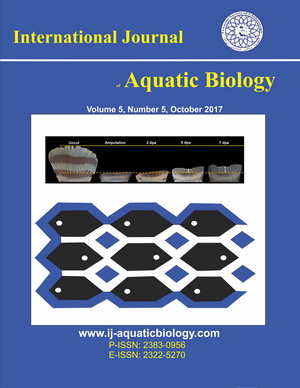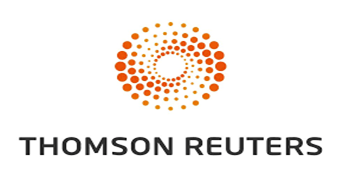The effect of the ethanolic extract of Tetraselmis suecica microalgae isolated from the Persian Gulf on the expression of BAX/BCL-2 genes in the Hela cervical cancer cell line
Marine organisms produce a variety of compounds with medicinal activities, including anticancer effects. This study aimed to investigate the effect of the ethanolic extract of Tetraselmis suecica algae isolated from the Persian Gulf on the expression level of BAX/BCL-2 genes in the Hela cervical cancer cell line. The ethanolic extract was obtained from T. suecica, and then, using the IC50 formula, the best extract concentration was obtained. MTT, Annexin V-FITC, and Real-time PCR tests were performed to investigate the effect of T. suecica microalgae extract on cytotoxicity, apoptosis, and expression of BAX/BCL-2 genes. Tetraselmis suecica extract significantly decreased the survival rate, increased apoptosis, increased the expression of the pro-apoptotic BAX gene, and reduced the expression of the anti-apoptotic BCL-2 gene in the Hela cell line. The results showed that the ethanolic extract of T. suecica microalgae may be helpful in the management of cervical cancer.
Downloads
Ávila-Román J., García-Gil S., Rodríguez-Luna A., Motilva V., Talero E. (2021). Anti-inflammatory and anticancer effects of microalgal carotenoids. Marine Drugs, 19(10): 531.
Behinska K.M., Baldovska S., Mihal M., Roychoudhury S., Kolesarova A. (2024). A pilot in vitro study on the effect of blue honeysuckle extract on human non-cancerous and cancerous ovarian cells. Journal of Microbiology, Biotechnology and Food Sciences, 13(4).
Bernardini G., Minetti M., Polizzotto G., Biazzo M., Santucci A. (2018). Pro-apoptotic activity of French Polynesian Padina pavonica extract on human osteosarcoma cells. Marine Drugs, 16(12): 504.
Brahmbhatt H., Oppermann S., Osterlund E.J., Leber B., Andrews D.W. (2015). Molecular pathways: leveraging the BCL-2 interactome to kill cancer cells—mitochondrial outer membrane permeabilization and beyond. Clinical Cancer Research, 21(12): 2671-2676.
Brotosudarmo T.H.P., Limantara L., Setiyono E. (2020). Structures of astaxanthin and their consequences for therapeutic application. International Journal of Food Science, 2020.
Lakmal C., Chaminda H., Samarakoon K.W., Lee W., Lee J-H., Abeytunga D., Lee H-S., Jeon Y-J. (2014). Anticancer and antioxidant effects of selected Sri Lankan marine algae. Journal of the National Science Foundation of Sri Lanka, 42(4): 315-323.
Drugs A.M.A., Bose S., Banerjee S., Patra J.K., Kerry R.G. (2020). Marine cyanobacteria and microalgae metabolites - a rich source of potential. Marine Drugs, 18(9): 476.
Ferdous U.T., Yusof Z.N.B. (2021). Medicinal prospects of antioxidants from algal sources in cancer therapy. Frontiers in Pharmacology, 12: 593116.
Fritz H., Kennedy D., Fergusson D., Fernandes R., Doucette S., Cooley K., Seely A., Sagar S., Wong R., Seely D. (2011). Vitamin A and retinoid derivatives for lung cancer: A systematic review and meta analysis. PloS one, 6(6): e21107.
Ghebre R.G., Grover S., Xu M.J., Chuang L.T., Simonds H. (2017). Cervical cancer control in HIV-infected women: past, present and future. Gynecologic Oncology Reports, 21: 101-108.
Goiris K., Muylaert K., Voorspoels S., Noten B., De Paepe D., E Baart G.J., De Cooman L. (2014). Detection of flavonoids in microalgae from different evolutionary lineages. Journal of Phycology, 50(3): 483-492.
Gupta S.P., Siddiqi N.J., Khan H.A., Alrokayan S.H., Alhomida A.S., Singh R.K., Verma P.K., Kumar S., Acharya A., Sharma B. (2022). Phytochemical profiling of microalgae Euglena tuba and its anticancer activity in Dalton's lymphoma cells. Frontiers in Bioscience-Landmark, 27(4): 120.
Hussein H.A., Mohamad H., Ghazaly M.M., Laith A., Abdullah M.A. (2020). Cytotoxic effects of Tetraselmis suecica chloroform extracts with silver nanoparticle co-application on MCF-7, 4 T1, and Vero cell lines. Journal of Applied Phycology, 32: 127-143.
Jan R. (2019). Understanding apoptosis and apoptotic pathways targeted cancer therapeutics. Advanced Pharmaceutical Bulletin, 9(2): 205.
Jiang Y., Xu H., Wang J. (2016). Alantolactone induces apoptosis of human cervical cancer cells via reactive oxygen species generation, glutathione depletion and inhibition of the Bcl-2/Bax signaling pathway. Oncology Letters, 11(6): 4203-4207.
Lopez A., Reyna D.E., Gitego N., Kopp F., Zhou H., Miranda-Roman M.A., Nordstrøm L.U., Narayanagari S.-R., Chi P., Vilar E. (2022). Co-targeting of BAX and BCL-XL proteins broadly overcomes resistance to apoptosis in cancer. Nature Communications, 13(1): 1199.
Hadisaputri Y.E., Andika R., Sopyan I., Zuhrotun A., Maharani R., Rachmat R., Abdulah R. (2021). Caspase cascade activation during apoptotic cell death of human lung carcinoma cells A549 induced by marine sponge Callyspongia aerizusa. Drug Design, Development and Therapy, 15: 1357-1368.
Maeda H., Khatami M. (2018). Analyses of repeated failures in cancer therapy for solid tumors: poor tumor-selective drug delivery, low therapeutic efficacy and unsustainable costs. Clinical and Translational Medicine, 7: 1-20.
Majumder I., Paul S., Nag A., Kundu R. (2020). Chloroform fraction of Chaetomorpha brachygona, a marine green alga from Indian Sundarbans inducing autophagy in cervical cancer cells in vitro. Scientific Reports, 10(1): 21784.
Murad H., Ghannam A., Al?Ktaifani M., Abbas A., Hawat M. (2015). Algal sulfated carrageenan inhibits proliferation of MDA-MB-231 cells via apoptosis regulatory genes. Molecular Medicine Reports, 11(3): 2153-2158.
Parra-Riofrío G., García-Márquez J., Casas-Arrojo V., Uribe-Tapia E., Abdala-Díaz R.T. (2020). Antioxidant and cytotoxic effects on tumor cells of exopolysaccharides from Tetraselmis suecica (Kylin) butcher grown under autotrophic and heterotrophic conditions. Marine Drugs, 18(11): 534.
Permatasari H.K., Wewengkang D.S., Tertiana N.I., Muslim F.Z., Yusuf M., Baliulina S.O., Daud V.P.A., Setiawan A.A., Nurkolis F. (2022). Anti-cancer properties of Caulerpa racemosa by altering expression of Bcl-2, BAX, cleaved caspase 3 and apoptosis in HeLa cancer cell culture. Frontiers in Oncology, 12: 964816.
Pfeffer C.M., Singh A.T. (2018). Apoptosis: a target for anticancer therapy. International Journal of Molecular Sciences, 19(2): 448.
Raju A., George D. (2023). In vitro antioxidant and anticancer activity of the fruit extract of Rivina humilis L. (red pigeon berry). Journal of Microbiology, Biotechnology and Food Sciences, 13(1): e9347-e9347.
Ramnath G.M., Jayaraman S., Thirugnanasampandan R., Gunasekaran B., Gopalakrishnan A. (2023). Chemical composition analysis and evaluation of antioxidant, antiacetylcholinesterase and cytotoxicity of Murraya koenigii (l.) Spreng fruit oil. Journal of Microbiology, Biotechnology and Food Sciences, 13(3): e6135-e6135.
Roshan Cheragh M., Mabudi H. (2023). Effect of Tetraselmis suecica microalgae isolated from the Persian Gulf on the expression level of AKT/mTOR genes in the liver cancer cell line, Huh7. International Journal of Aquatic Biology, 11(6): 563-570.
Roura E., Castellsague X., Pawlita M., Travier N., Waterboer T., Margall N., Bosch F.X., De Sanjosé S., Dillner J., Gram I.T. (2014). Smoking as a major risk factor for cervical cancer and pre?cancer: Results from the EPIC cohort. International Journal of Cancer, 135(2): 453-466.
Sak K. (2012). Chemotherapy and dietary phytochemical agents. Chemotherapy research and practice, 2012: 282570.
Sansone C., Galasso C., Orefice I., Nuzzo G., Luongo E., Cutignano A., Romano G., Brunet C., Fontana A., Esposito F. (2017). The green microalga Tetraselmis suecica reduces oxidative stress and induces repairing mechanisms in human cells. Scientific Reports, 7(1): 41215.
Sharma R., Mondal A.S., Trivedi N. (2023). Anticancer potential of algae-derived metabolites: recent updates and breakthroughs. Future Journal of Pharmaceutical Sciences, 9(1): 1-44.
Sheng Y.-N., Luo Y.-H., Liu S.-B., Xu W.-T., Zhang Y., Zhang T., Xue H., Zuo W.-B., Li Y.-N., Wang C.-Y. (2020). Zeaxanthin induces apoptosis via ROS-regulated MAPK and AKT signaling pathway in human gastric cancer cells. OncoTargets and Therapy, 10995-11006.
Shukla S., Dass J., Pujani M. (2014). p53 and bcl2 expression in malignant and premalignant lesions of uterine cervix and their correlation with human papilloma virus 16 and 18. South Asian Journal of Cancer, 3(01): 048-053.
Siegel R., Ma J., Zou Z., Jemal A. (2014). Cancer statistics, 2014. CA: A Cancer Journal for Clinicians, 64(1): 9-29.
Siegel R., Naishadham D., Jemal A. (2013). Cancer statistics, 2013. CA: A Cancer Journal for Clinicians, 63(1): 11-30.
Sowmya P.R.-R., Arathi B.P., Vijay K., Baskaran V., Lakshminarayana R. (2017). Astaxanthin from shrimp efficiently modulates oxidative stress and allied cell death progression in MCF-7 cells treated synergistically with ?-carotene and lutein from greens. Food and Chemical Toxicology, 106: 58-69.
Ta?tan Z., Gulcin A., Kilic T.U., Avci E. (2024). In vitro evaluation of the biological activity potential of aloe vera gel: antioxidant activity and cytotoxic effects in HEPG2 and L929. Journal of Microbiology, Biotechnology and Food Sciences, e10668-e10668.
WHO. (2014). Comprehensive cervical cancer control (Geneva: World Health Organization), Geneva.
Zhou X., Wang M. (2015). Expression levels of survivin, Bcl-2, and KAI1 proteins in cervical cancer and their correlation with metastasis. Genetics and Molecular Research, 14(4): 17059-17067.
Copyright (c) 2024 International Journal of Aquatic Biology

This work is licensed under a Creative Commons Attribution 4.0 International License.








